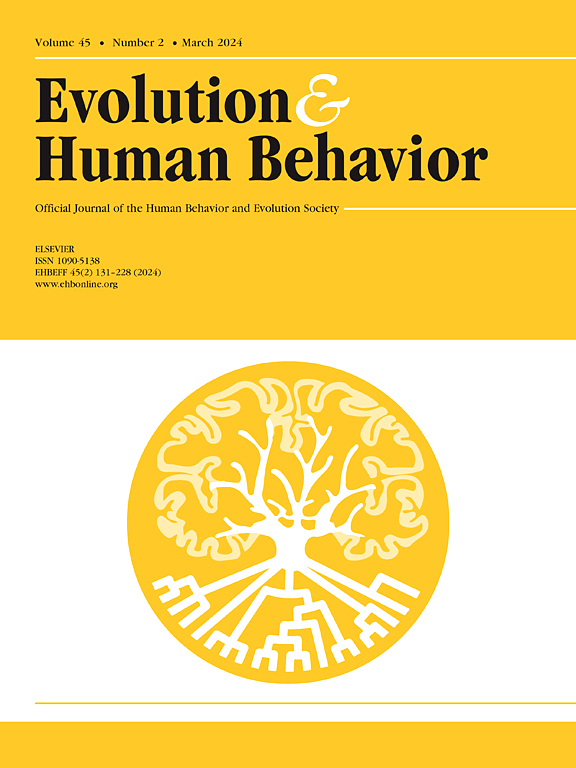Love, lust, and physical intimacy: oxytocin and the contraction of involuntary muscles
IF 3.2
1区 心理学
Q1 BEHAVIORAL SCIENCES
引用次数: 0
Abstract
Among other things, love can refer to care for a child or to sexual desire. This curious linguistic association probably reflects the evolutionary repurposing of machinery that established and maintained the ancient bond between mothers and offspring for the establishment and maintenance of romantic bonds between sexual partners. Oxytocin has been implicated in both kinds of bond. I propose that oxytocin possessed an ancestral function in gamete release and that the earliest form of attachment to offspring was a suppression of appetite after spawning to prevent parents from eating their progeny. Maternal care has been greatly elaborated since this simple beginning. Human infants elicit feelings of care because of their helplessness which has been ascribed to their neural immaturity at birth which has, in turn, been ascribed to problems associated with the delivery of a large-brained infant through a narrow birth-canal. I propose instead that the helplessness and hairlessness of human infants were adaptations of ancestral infants to obtain better care by being held close to warm maternal bodies.
爱,欲望和身体亲密:催产素和不随意肌肉的收缩
在其他事物中,爱可以指对孩子的照顾或性欲。这种奇怪的语言联系可能反映了在进化过程中,为了建立和维持性伴侣之间的浪漫关系,建立和维持母亲和子女之间的古老联系的机制发生了改变。催产素与这两种关系都有关系。我认为催产素在配子释放中具有祖先的功能,而对后代的依恋最早形式是在产卵后抑制食欲,以防止父母吃掉自己的后代。自这个简单的开始以来,孕产妇保健得到了极大的发展。人类婴儿之所以会产生被照顾的感觉,是因为他们的无助感,这被归因于他们出生时的神经不成熟,而这又被归因于与通过狭窄产道分娩大脑量婴儿有关的问题。相反,我认为人类婴儿的无助和无毛是祖先婴儿的适应,通过靠近温暖的母亲的身体来获得更好的照顾。
本文章由计算机程序翻译,如有差异,请以英文原文为准。
求助全文
约1分钟内获得全文
求助全文
来源期刊

Evolution and Human Behavior
生物-行为科学
CiteScore
8.30
自引率
9.80%
发文量
62
审稿时长
82 days
期刊介绍:
Evolution and Human Behavior is an interdisciplinary journal, presenting research reports and theory in which evolutionary perspectives are brought to bear on the study of human behavior. It is primarily a scientific journal, but submissions from scholars in the humanities are also encouraged. Papers reporting on theoretical and empirical work on other species will be welcome if their relevance to the human animal is apparent.
 求助内容:
求助内容: 应助结果提醒方式:
应助结果提醒方式:


